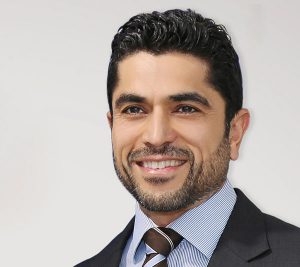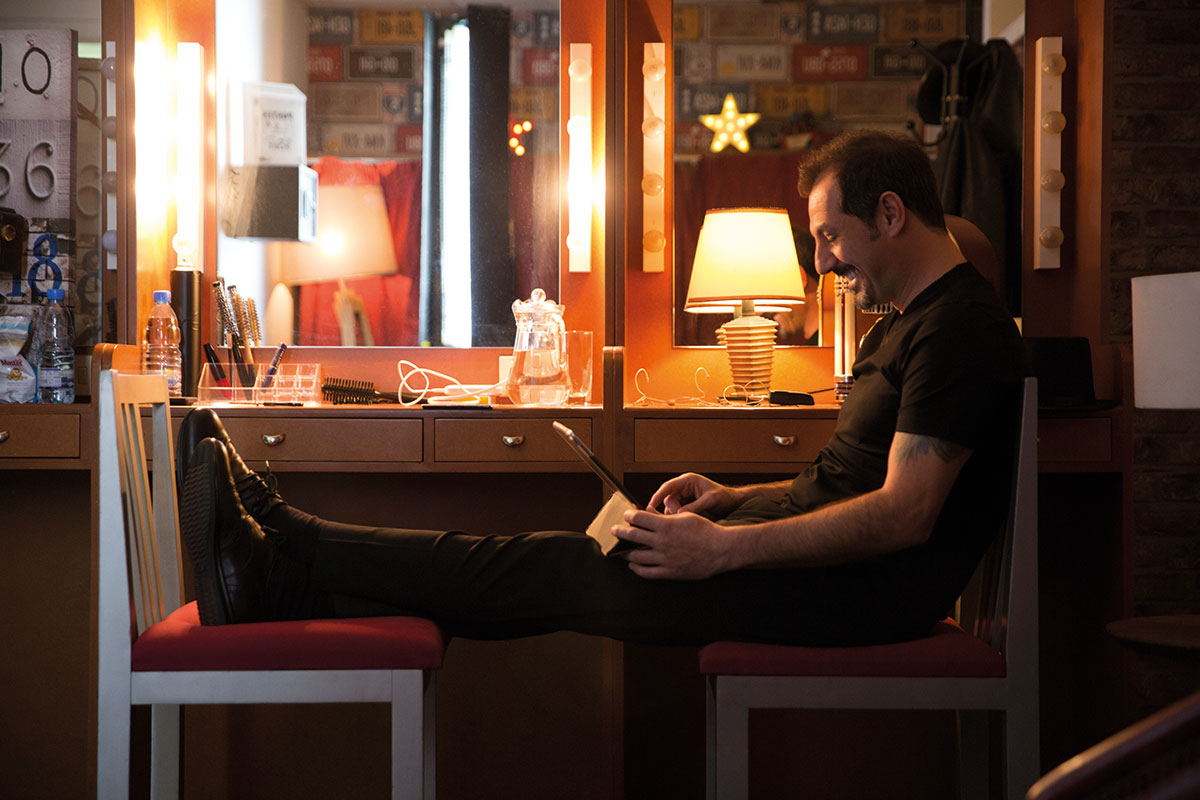
After more than 40 years of operation, DTVE is closing its doors and our website will no longer be updated daily. Thank you for all of your support.
Fluctuating fortunes
The last year has seen Saudi Arabia emerge as the major force in Middle East media, while OTT TV providers are making their presence felt. Rebecca Hawkes reports.
Entertainment has always been a hot news topic, but over the past year pay-TV in the Middle East and North Africa (MENA) hit the headlines like never before. Piracy and politics fuelled negative column inches worldwide as the region’s pay TV subscriptions were squeezed and digital video stole a march.
For good and bad, Saudi Arabia has featured as the region’s major protagonist.
On the positive side, developments under the leadership of Crown Prince Mohammad bin Salman have, over the past year, seen the Kingdom embarking on a major revamp of its entertainment and media sector.
To help fuel this, the Saudi government now appears to be the majority owner of the Arab world’s most popular free-to-air broadcaster, MBC, which is set to enrich the local content industry through the recently established subsidiary MBC Studios. Building on its existing assets O3 Productions in Dubai, AlSadaf in KSA and O3 Medya in Turkey, Peter Smith-led MBC Studios is set to provide content tailored to Saudi, Middle Eastern and global audiences.
Furthermore, state-owned telco Saudi Telecom (STC) now controls regional IP video technology provider Intigral. Together, they are busy developing an ambitious MENA-centric over-the-top (OTT) video platform with global aspirations, called Jawwy TV.
New kid on the block
In April, the Jawwy TV mobile app was launched across the Kingdom of Saudi Arabia (KSA), Bahrain and Kuwait, providing subscribers with live TV and a large library of on-demand content in Arabic, Turkish and English. The Homebox IPTV service followed in July, first to Saudi Arabia with rollout set to follow in Kuwait and Bahrain via STC-owned Viva.
In addition to both free-to-air and encrypted TV channels, series and films, the platform is home to the Saudi Football League (SPL), after STC acquired the media rights in a 10-year, US$1.8 billion (e1.6 billion) deal announced in February 2018.
A US$8 monthly subscription to Jawwy TV also delivers subscription video-on-demand service Starz Play, along with content from Wide Khaleeji, Blu TV, and OSN. Acquired Arabic content may be complemented going forward by Jawwy’s own productions and co-productions, Intigral has said.
Integration with YouTube and MBC’s popular VOD service Shahid is also underway, and the company is hopeful of future partnerships with international streaming leaders such as Netflix.
The platform, which aims to both serve the local population and take Arabic content to the world stage, certainly has lofty ambitions. And, with Saudi government backing, could be looking to emulate Qatar’s established pay-TV operator BeIN Media in promoting the nation, through the medium of broadcast, to the wider world.
“We have a brand new extrovert-looking, future-addressing media policy and strategy from the Saudi state. All the media assets under its control and primarily MBC, Saudi Telecom – together with Intigral and Jawwy TV – will be aligned to serve that new policy,” says Constantinos Papavassilopoulos, principal research analyst, IHS Markit. “Also, MBC is opening its doors to local talent and other interested third parties who can contribute to content creation. Maybe the new pay-TV operator in MENA, the one who will challenge beIN Media’s dominance, will come from Saudi Arabia.”
BeIN battles the pirates
If Saudi Arabia has been the key protagonist this year in the region’s pay TV drama, Qatar could be viewed as its antagonist. The political rift between the Gulf neighbours has become increasingly acrimonious since diplomatic and economic relations were severed in June 2017.
Qatar’s BeIN Media has recently costed the fallout for its business at US$1 billion – in terms of lost subscription revenue from the large markets it has been banned from operating in – namely Saudi Arabia, Egypt and, to a lesser extent, Bahrain – and also from the damage caused by the sophisticated pirate outfit BeoutQ – which it claims hails from the Kingdom. Repeated requests for its alleged Saudi backers to shut down BeoutQ have failed to bear fruit for the Qatar government-backed media network.
In October 2018, Qatar launched a World Trade Organisation (WTO) challenge in Geneva claiming Saudi Arabia is in breach of international treaties on the protection of intellectual property. Simultaneously, BeIN Media has started an international investment arbitration case led by law firm Sidley Austin LLP, calling for compensation from the Kingdom.
 BeoutQ stands accused of repeatedly stealing premium sports content for which BeIN holds the highly prized – and highly priced – regional rights. Indeed, BeIN is not the only party crying foul; the major sporting bodies with which it partners have all echoed their condemnation of BeoutQ.
BeoutQ stands accused of repeatedly stealing premium sports content for which BeIN holds the highly prized – and highly priced – regional rights. Indeed, BeIN is not the only party crying foul; the major sporting bodies with which it partners have all echoed their condemnation of BeoutQ.
“Piracy has been a mission-critical issue over the past year, posing a major threat not only for BeIN Media Group but for the entire world of sports and entertainment. The political games played by Arabsat, BeoutQ and its Saudi backers in stealing our content have consequences that affect the future of world sport,” said Tom Keavny, managing director, BeIN Media Group. “That is why the international sports community – everyone from FIFA to UEFA, Formula 1 to all the governing bodies of world tennis, to the Olympics, the NBA and the NFL, together with a host of other global broadcasters – have all taken a stand and publicly condemned this Saudi-based piracy; and many have now initiated or are initiating legal challenges.”
In terms of evidence, BeIN’s Keavny alleges: “The beoutq.se website is geo-blocked to Saudi Arabia and satellite subscriptions must be validated from a Saudi IP address; its subscriptions are priced in Saudi riyals only; and its channels carry advertising for numerous Saudi brands. Indeed, even the name ‘BeoutQ’ is manifestly intended to mean ‘be out Qatar’ – a reference to the Saudi-led blockade against Qatar.”
Digital security and media solutions heavyweights Cisco, Nagra and Overon have also confirmed that pirate channels have been distributed by Riyadh-based regional satellite operator Arabsat “in technical detail,” Keavny adds.
For their part, the Saudi government and Arabsat – in which the former holds a 35% stake – have consistently denied any involvement with either BeoutQ or its transmission. The Kingdom said it is taking action to combat content theft and is committed to protecting intellectual property.
Stumbling blocks
 Piracy clearly remains rife across the Arab world, where the theft of intellectual property undermines multi billion dollar-broadcasting contracts. Indeed, says Martin Stewart (right), CEO of BeIN’s major rival OSN, content piracy remains the biggest competitor to the entire pay TV sector in MENA.
Piracy clearly remains rife across the Arab world, where the theft of intellectual property undermines multi billion dollar-broadcasting contracts. Indeed, says Martin Stewart (right), CEO of BeIN’s major rival OSN, content piracy remains the biggest competitor to the entire pay TV sector in MENA.
In a region where a vast number of popular free-to-air satellite channels feed more than 80% of homes, the cost of a few riyals or dirhams to access pirated premium content is undeniably attractive to many. This factor, coupled with an overinflated cost of acquiring premium content, makes it tough for the region’s pay TV operators to operate within a profitable margin.
Since 2010, the region’s two largest players, BeIN Media and Dubai-based OSN, have accounted for over 60% of pay TV subscriptions in MENA, and over 50% of revenues, according to IHS Markit. However, pay TV penetration stood at just 12% of the region’s population, as of the end of 2016 (before BeIN was banned from Saudi Arabia, Egypt and Bahrain).
In spite of the low penetration rate, premium content is more expensive to license in MENA than in more mature pay TV markets. “Prices dwarf those in the UK, which has about three times the pay TV subscriptions of the entire Middle East and North Africa,” says OSN CEO Stewart. “Sport is the most glaring example of regional overbidding but entertainment is also more expensive to acquire in MENA. It is not sustainable as a business model to rack up huge losses on the acquisition of content.”
With the region’s less stable economic and political outlook, the warning would seem to hold merit. At the end of the 2017, pay TV subscriptions across MENA’s Arab nations totaled 4.23 million, down 21% from 5.35 million a year earlier, according to IHS Markit.
“Regulation needs to be taken seriously in MENA – for both legal overbidding and content theft – as both are stifling the market,” says OSN’s Stewart. “The absence of competition law needs to be addressed to encourage operators to stop paying vast sums for content and operating at a loss because they have wealthy benefactors. And respecting intellectual property, which the UAE does well, is not rigorously enforced region-wide. Its enforcement is crucial to developing the media industry. If these factors are not addressed, the danger for the local industry in the future is that international players will dominate and regional players will be brushed aside.”
Winners and losers
Between 2010 and 2016, IHS Markit claims pay TV subscriptions in the region grew at a CAGR of 17%, while revenues increased by a CAGR of 26%. However, the growth in MENA pay TV subscriptions stalled in 2017 due to the block on BeIN Media in Saudi Arabia, Egypt, Bahrain and, albeit temporarily, in the UAE.
BeIN lost around 40% of its subscription base in 2017, although it remains the largest operator in terms of market share, while OSN experienced moderate growth in 2017. However, UAE-based telco Etisalat, along with Saudi’s STC, made substantial progress with its IPTV offer, said IHS. In total, IPTV subscriptions grew seven fold between 2010 and 2016.
“As a result, 25% of MENA pay TV households now subscribe to an IPTV service, even though the platform is only present in a handful of [predominantly Gulf] countries. In 2017, IPTV’s market share crossed over 30% as a result of the blockade,” says Constantinos Papavassilopoulos, principal research analyst, IHS Markit.
In the next few years “OSN will remain resilient, boosted by its new pricing and packaging policy, while partnerships and value-added services are paving the way for the growth of telcos’ TV businesses,” he says.
OSN’s decision in early 2017 to reduce its introductory offer and introduce pick ‘n’ mix packages seems to have paid off. “To attract the mass market we had to have the ability to fashion a package for all pockets, to appeal across a region notable for disparities of income,” explains OSN’s Stewart. “We have seen a lot of traction since flexible pricing was introduced, although times are difficult economically and the political situation has been particularly tense in the past 12 months.”
As a result of the new pricing regime, OSN’s revenues fell by around 12% in 2017 from 2016. However, its subscriber base grew by 4%. Looking forward to 2022, OSN’s standalone digital service Wavo is also set to gain a 10% share of the regional OTT market, says IHS Markit.
Meanwhile, OSN’s rival BeIN is forecast by Digital TV Research to increase its subscription base from 1.12 million at the end of 2017 to 1.87 million in 2023 – due mainly to the popularity of its sports assets.
BeIN now claims to own the single largest portfolio of sports rights of any global broadcaster. This year it renegotiated MENA-wide licensing deals until 2022 with both the Premier League and UEFA for Champions and Europa League football. Next year will bring live coverage of the African Cup of Nations in Cameroon.
BeIN’s growing cricket offer has also been given a boost having snatched Indian Premier League (IPL) coverage away from previous incumbent OSN.
OSN’s Stewart admits that the high octane T20 IPL “is a great product and we are of course disappointed to lose it. But I’m running a business and have to deliver a profit to shareholders, so I couldn’t justify the expenditure necessary to keep it. However, we still have a broad range of programming on our cricket channel, and have just broadcast the Asia Cup – played mainly in the UAE – which was a fantastic event.”
Stewart’s prudent approach differs significantly from that of BeIN, where an estimated US$1 billion annual bill for sports content rights exceeds subscriptions revenues, IHS Markit’s Papavassilopoulos calculates. The revenue lost from the key sports-loving markets of Saudi Arabia and Egypt will have particularly hurt, he says.
Looking forward, Simon Murray, principal analyst at Digital TV Research, forecasts that in the 13 Arabic-speaking Middle East markets it studied, pay TV revenues will only grow by 24% from US$1,177 million in 2017 to US$1,461 million in 2023, despite pay TV subscriptions rising by 47% to 5.84 million. “If subscriptions are growing faster than revenues, then ARPU must be falling,” he says.
Digital traction
While the traditional pay- V sector has faced obstacles, OTT video is taking hold in the region – thanks in large part to its youthful and technically savvy demographic.
OTT subscriptions passed one million for the first time in 2017, up 48% to 1.38 million compared with 2016. Revenues exceeded US$100 million, also for the first time – up 44% over the same period, according to IHS Markit. MENA’s OTT subscriptions are forecast to reach five million in 2022, a CAGR of 34.4% between 2016 and 2022.
Digital TV Research’s Murray is even more optimistic about the sector, suggesting the Arab world will have 11 million subscribers to paid VOD platforms come 2023. Saudi Arabia will add nearly three million SVOD users between the end of 2017 and 2023, taking its total to 3.6 million, he believes.
What both analysts agree on is the current SVOD market leader, in terms of subscriber numbers. Lionsgate-backed Starz Play, which launched across MENA in 2015, commanded 26.77% of the market in 2017. MBC’s Shahid Plus SVOD service followed with 25.33%, then Netflix with 16.54%, and Dubai-based Icflix with 11.53%, according to IHS Markit. Next came Asia’s Iflix, Selevision’s Seevii, OSN’s Wavo, BeIN Connect, PCCW-backed Viu and finally Amazon Prime Video.
 “Being ahead of Netflix, Shahid and Wavo has been a highlight for us this year. We are continuing to grow in MENA and investing in micro improvements to the service, which is taking us to the point where we’ll be profitable next year,” says Starz Play’s CEO Maaz Sheikh (right).
“Being ahead of Netflix, Shahid and Wavo has been a highlight for us this year. We are continuing to grow in MENA and investing in micro improvements to the service, which is taking us to the point where we’ll be profitable next year,” says Starz Play’s CEO Maaz Sheikh (right).
Having teamed up with local telcos to offer the service with mobile payment options has helped drive Starz Play’s subscriptions in markets with very low credit card penetration. In addition to carrier billing, acquisition costs, marketing and branding are all helped through these tie-ups, says Sheikh. “We are still learning; we have yet to learn the full value of such partnerships. With each relationship we have gone deeper to improve our service and to monetise the operation,” he says
Improving the platform’s content curation, personalisation and customer recommendation features have been a focus for Starz Play, which also launched in Pakistan this year.
In MENA Starz Play has expanded its content offering, with more from Disney, Warner Bros and Fox. It has also recently begun streaming the final season of The Big Bang Theory ‘day and date’ with the US. “The more Netflix develops their own originals, made for western audiences, the more opportunity it gives us to license established shows like this, and franchises, such as Flash, Grey’s Anatomy and Friends,” says Sheikh.
Starz Play’s Hollywood content is also now complementing the Arabic and Turkish content selection on Jawwy TV, with a single sign on to access it all. “Although we make less money per subscriber combining with Jawwy than going direct to consumer, we reach more customers, and also keep full visibility – we can see what customers watch on the platform,” Sheikh says.
Partnership with telcos is also key to expansion for Kuala Lumpur-based OTT service Iflix, which entered the Middle East market in 2017. This year it has moved its regional headquarters to Cairo, because, says John Saad, CEO of Iflix MENA, “Egypt is the hub of content creation in the Middle East and North Africa, and is one of our key markets, along with Saudi Arabia and Morocco”.
This year it launched version 3.0 of the Iflix app, and with it a two-tier access model, one focusing on SVOD and another free, advertising supported service. As well as Hollywood, Korean and Bollywood content on-demand, Iflix is also now offering live free-to-air TV, with Afro Urban media group Trace being the first to climb onboard with its Urban and Sports Stars channels.
Already teamed with Zain, this year Iflix announced partnerships with Vodafone Egypt and Moroccan mobile operator Inwi, which are now both offering the VOD service at preferable rates.
Available from US$2 to $4 per month, depending on the market, Iflix has also initiated a daily pricing offer in Egypt to help boost its appeal. While daily subscriptions are only currently available in Egypt, it is a model iflix is looking to expand in other MENA markets.
(Local) content is king
Like the other VOD providers in the region, Iflix is on a learning journey, says Saad. There have been noticeable benefits in introducing mobile wallet payment options and providing locally relevant content. To which end it is currently in talks with writers and talent in its three target markets, along with producers of both classical and short form content production.
“When we offer Asian and western content in MENA we always offer subtitles. But there is always a higher attraction to local content because of the familiar language and cultural references. To attract the masses, and crack the market, we need local content,” says Saad.
Netflix, meanwhile, has this year announced both the production of its first Arabic original series, Jinn, and its first distribution partnerships in the Middle East – most recently partnering UAE telcos du and Virgin Mobile, and in February a tie-up with OSN.
“Netflix is a great partner and a great content producer. Add them to the other fantastic studios we have and we have unbeatable entertainment,” says Stewart at OSN, which has also renewed deals with US studios like Disney and Viacom.
The tie-up sees Netflix integrated on the OSN set-top to allow anytime, anywhere access across multiple screens, paid for through a consolidated OSN bill.
However, Stewart would like to see an even deeper relationship between the two. “We hope to continue to develop our partnership with Netflix, and would love to make something with them as they roll out their Arabic language programming,” he says.
Certainly OSN is well positioned on local content, offering a portfolio of 15 Arabic language channels, which delivered 29 new Arabic shows for Ramadan 2018.
The Ya Hala suite of channels accounts over half the operator’s viewing, says Stewart, although takes just 15% of its budget.
“While OSN has a very good Arabic content business I don’t think the region’s potential for storytelling and content production has been anywhere near realised. Creative talent is strong in MENA and it is incredibly important that it is given a voice,” says Stewart. “The MENA audience, like anywhere else in the world, want to see content in their own language, with local actors telling stories in scenarios they can recognise. Of course it also wants to see Tom Cruise in the latest Mission Impossible. We can provide both.” In addition, OSN now offers a free, curated content publishing platform for the short form productions of local creatives. Called ASLI, it is hosted on Wavo.
Netflix, meanwhile, is set to add its six-part Arabic teen soap Jinn to its growing catalogue of originals. Produced by Lebanon’s Kabreet Productions, the drama is directed by Mir-Jean Bou Chaaya. Currently in production, Jinn will bring Middle Eastern folklore to the modern world when it launches in 2019, says Yann Lafargue, head of corporate and tech communications for Netflix EMEA. The series follows Netflix’s first foray into Arabic content with the Creative Arab Talent-produced comedy special Adel Karam: Live from Beirut (pictured top), which launched worldwide in March 2018.
“Investing in local content is key and what is even more exciting for us is being able to create a global audience for local language shows through our 130 million memberships, spanning over 190 countries. Looking at our slate of international originals, shows such as The Rain from Denmark, Dark from Germany and Money Heist from Spain are just some of the examples that travelled well across the world, and we expect the same for Jinn,” says Lafargue.
The US video streaming giant also looks forward “to announcing new projects from the region in the near future,” he says. “Netflix recognises that the MENA region not only has a rich heritage in great storytelling and entertainment but a vibrant community of content creators and storytellers. The diversity of the region and its entertainment tastes also gives us so much to work with.”
Certainly Netflix’s lack of local content and distribution partnerships – along with an absence of support for local currencies or differentiated pricing – initially held back its regional development. Now that looks set to change. By 2022 IHS Markit forecasts Netflix will account for 23% of total OTT subscriptions in MENA.
BeIN is also exploring local and localised content opportunities. A new tie-up with DreamWorks Animation provides access to its content library in a choice of languages. BeIN has also announced it will work with BBC Studios to co-develop, produce and distribute content in Qatar, the Middle East and Turkey, where it owns pay TV platform Digiturk.
“We are confident that our viewers will reap the benefits of having content that is produced specifically for the regions they are in and that strives to cater to their preferences,” says beIN Media Group’s MD Tom Keavny.
Given the political outlook, it is difficult to predict the outlook for MENA’s pay TV sector with any certainty in coming months. However, tackling piracy, expanding local content production and the rollout of Jawwy TV could all hold a key to unlocking future growth for the industry.
Looking at the blossoming OTT market, analysts agree that while there could be consolidation in Arabic SVOD platforms, Netflix’s increased regional focus is now looking set to shape the landscape.



